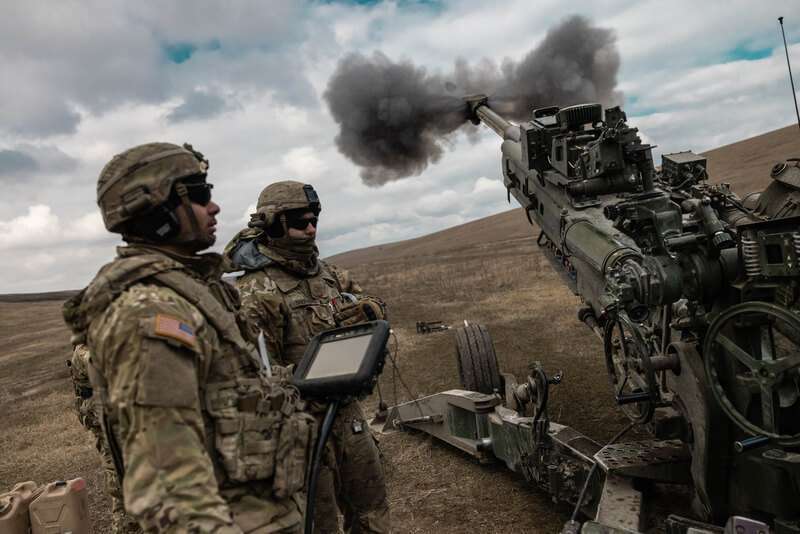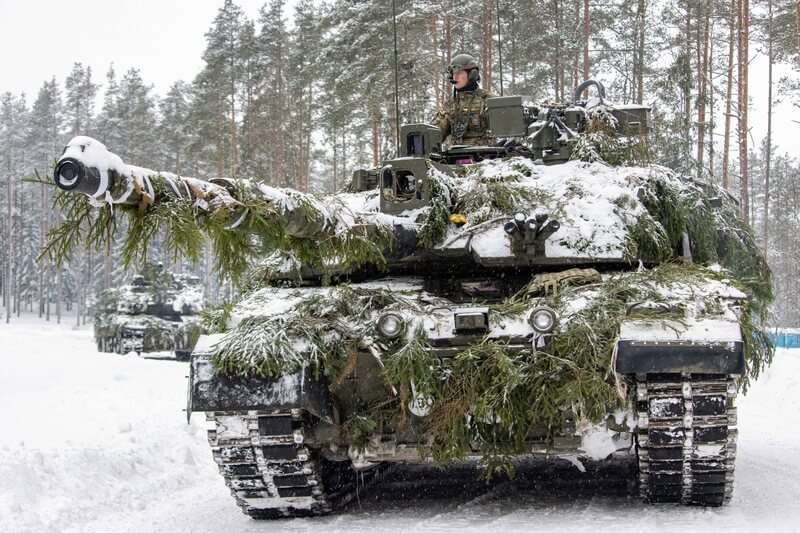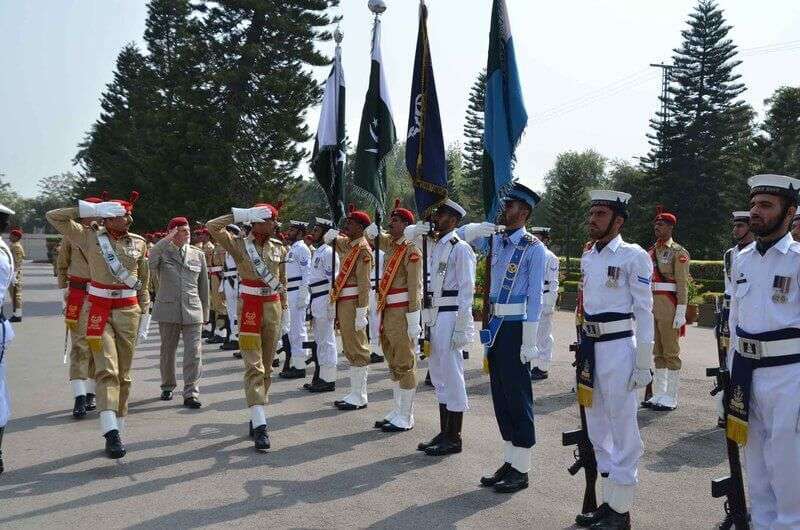These are the 40 NATO partner countries that are not NATO members

A total of 40 nations from five continents make up the multilateral ecosystem that the North Atlantic Treaty Organisation (NATO) has woven around itself and beyond over the past 25 years.
Unlike the 30 states - 28 European states, the United States and Canada - that have signed and ratified the Washington Treaty of April 1949 and are therefore full members of the Atlantic Alliance, some 40 countries are associated with the world's most powerful defence alliance. But they have not signed the Pact, nor do they have any formal ties to its provisions.
As non-members of the North Atlantic Treaty, partner nations are not bound by its provisions and are not part of the Alliance's political or military structure. This is the case for Ukraine and nearly three dozen other countries in Europe, North Africa, the Middle East, the Mediterranean, the Indo-Pacific and even South America. But being a NATO partner has its advantages, as the government in Kiev has seen.

The NATO ecosystem in its broadest sense encompasses 70 countries, the 30 member states and 40 other partners, spread across Europe, Asia, Africa, the Americas and Oceania. Each nation has established bilateral cooperation agreements with the Alliance, allowing each government to "flexibly graduate the pace, scope, intensity and focus of its individual relationship with NATO", the defence organisation stresses.
The current reality reduces the number of partners from 40 to 37 countries. Three have suspended their membership and any activity with the Alliance. They are Afghanistan, Belarus and Russia. The Taliban government in Kabul as a result of its violent seizure of power in the summer of 2021. Russia and Belarus as a result of the invasion of Ukraine and the seizure of territory ordered by President Vladimir Putin and the unconditional support of the Minsk government headed by Alexander Lukashenko.

In late May 1982, exactly 40 years ago, Spain became the 16th country to join the Alliance. The Cold War reigned. Partnership development outside NATO's walls was non-existent and only veteran officials recalled that as far back as 1967, Belgium's Foreign Minister Pierre Harmel had outlined in a prospective report the possibility of cooperation with non-NATO nations.
But the unexpected happened. The fall of the Berlin Wall in November 1989 and the dissolution of the Warsaw Pact in July 1991 saw a total of 14 states from the Soviet military bloc enter NATO one by one through NATO's front door between 1999 and 2020. Almost in parallel, numerous countries from different regions of the world accepted the Allies' invitation to form some form of cooperation. The so-called "global" partners stand out. Two of these are Japan and the Republic of Korea, both considered reliable and staunch allies of the United States.

Australia and New Zealand, the most important and developed countries in Oceania, multi-ethnic nations in whose political sphere the Anglo-Saxon culture prevails, are included under the same headings. In view of China's external military projection, the governments of Tokyo, Seoul, Canberra and Wellington have been invited to attend the foreign ministers' meetings of the 30 countries since December 2020, reflecting the importance the Alliance attaches to them. All four countries are already active participants in the NATO-led International Security Assistance Force (ISAF) in Afghanistan.
There are five other global partners. They are Iraq, Mongolia, Pakistan, Afghanistan - cooperation has been halted - and Colombia, the only Ibero-American country involved in the Alliance. The future Bogotá government's ties with NATO will be strengthened or weakened depending on whether Gustavo Petro's League of Anti-Corruption Rulers or Rodolfo Hernández's Historic Pact wins the second round of presidential elections on 19 June.
NATO's southern flank has also been taken into account thanks to the understanding between the governments in Rome and Madrid, whose insistence in the 1990s led to the birth of the so-called Mediterranean Dialogue, which the Alliance reluctantly gave the green light to. Its raison d'être is to contribute to stability in the region and to reinforce security outside NATO territory, for which the participation of African actors whose shores the Mare Nostrum bathes is unquestionable.

Algeria, Egypt, Morocco and Tunisia were invited in February 1995 to participate in the forum, as were a couple of Middle Eastern nations, Israel and Jordan. The Islamic Republic of Mauritania, the only Sahel country invited to join the project, is also included. Libya, with Colonel Muammar al-Gaddafi in power, was ruled out because of its support for international terrorist groups.
The governments of Cairo, Jerusalem, Nouakchott, Rabat and Tunis responded affirmatively and immediately to NATO's call. The Hashemite Kingdom delayed its approval until the end of the year and President Abdelaziz Bouteflika did not sign up to the project until 2000. Jordan and Morocco are the most amenable to cooperation. Between December 1995 and December 2004, their military units took part in the IFOR and SFOR peacekeeping missions alongside NATO multinational forces deployed in Bosnia and Herzegovina and participate in joint exercises.

The Alliance largely funds most of the activities of Mediterranean Dialogue partners with weaker economies, while each nation tailors its relationship with NATO according to its interests. In general terms, the aim is to enhance existing political dialogue, promote reform of defence institutions, contribute to the fight against terrorism and, most importantly, achieve interoperability of military forces.
Two other forums are of particular importance. To build mutual trust with the Gulf countries, contribute to stability in the region and anticipate emerging threats, the so-called Istanbul Cooperation Initiative, which originated at the NATO summit held that year in Turkey's capital, was launched in 2004. Bahrain, Kuwait and Qatar immediately signed up, and the Union of Arab Emirates followed soon after.

It is worth recalling that the first step in the Alliance's multilateral partnership ecosystem was the Partnership for Peace (PfP), approved at the October 1993 Atlantic Council in Brussels and activated in January of the following year. Its raison d'être was to establish cooperative links with countries of the defunct Warsaw Pact. Many of the Eastern countries that accepted the invitation are now full members of the Alliance.
Another forum is the Euro-Atlantic Partnership Council, which dates back to May 1997 and brings together a cast of democratic European nations (Austria, Finland, Ireland, Malta, Sweden and Switzerland) and the former Yugoslavia (Bosnia and Herzegovina and Serbia). Former Soviet republics from Eastern Europe (Georgia, Moldova and Ukraine) and the Caucasus and Central Asia (Armenia, Azerbaijan, Kazakhstan, Kyrgyzstan, Tajikistan, Turkmenistan and Uzbekistan) also participate. Belarus and Russia are also excluded from the forum.









